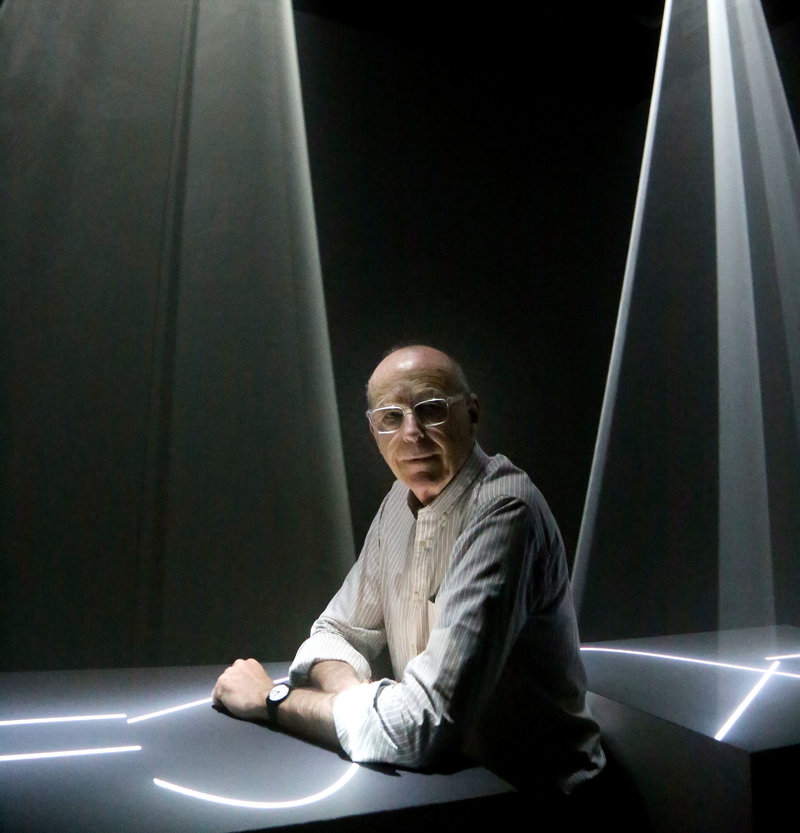On the art of light and time
The recently opened Fundació Gaspar in Barcelona presents the first solo exhibition in Spain of the 'solid light' 3D installations of veteran British artist Anthony McCall
In 1973, British artist Anthony McCall spent hours obsessively sketching until there was no more paper to cover. The result was Pencil Duration, not one of his most spectacular works on display at the Fundació Gaspar in Barcelona, but one that gets to heart of his work.
McCall is above all a draughtsman. All of his works are drawings of one type or another. A Landscape for Fire substituted the pencil with an arrangement of bonfires and instead of paper he used the landscape. That was the early seventies, when he moved to New York, where he brought a new vision that straddled performance and experimental cinema at a time when the world of art had had enough of Hollywood conventions. He wished to explore “the artistic possibilities of cinema,” according to Glòria Moure, the curator of the exhibition, Anthony McCall. Solid light, performance and public works (until October 30), with which the recently opened Fundació Gaspar debuts its programme as part of the Loop festival.
Landscape for Fire began as performance and later became a documentary. To understand McCall's work it is important to pay attention to this film on at the Palau dels Cervelló, the headquarters of the Fundació Gaspar. The fire and rising columns of smoke in the film are what McCall's drawings try to capture: constant movement that is slow and persistent, like time itself.
Solid light
However, McCall's art progressed rapidly during the 1970s until the artist eventually developed some of his best-known work, his so-called ‘solid-light' installations, which focused on the slow evolution of projected light in different three-dimensional spaces. The Gaspar exhibition features two of these installations that are sure to leave visitors impressed. Coming About (2016), which is being shown for the first time in this exhibition and is the first of a new series of solid lights that McCall is currently working on, uses oblique projections slanting down diagonally from the ceiling to converge on the floor. The visitor can literally move through the installation.
While the works adhere to strict scientific principles, they appear as if they have emanated from a dream world. McCall's invention of such things as a machine that spreads a fog of vapour come now after he abandoned the world of art after becoming convinced that his projects could not work in galleries: “McCall decided to withdraw for 20 years. He disappeared as an artist,” says Moure. Instead, he devoted himself to publishing art books until the advance of new technology eventually encouraged him to pick up his work where he had left off back in the 1990s.
Fifteen years later, McCall has begun a second life as an artist and his works are now to be found in the world's main museums and galleries, including the Macba. The exhibition in the Fundació Gaspar, his first ever solo display in Spain, even features work from 40 years ago that he has now updated. For example, Circulation Figures, a performance he made with friends who he charged with taking non-stop photos of each other. “He wanted to reflect on the use of images in the media. Today we can make a very current reading of this idea with mobile telephones and selfies,” says Moure.

